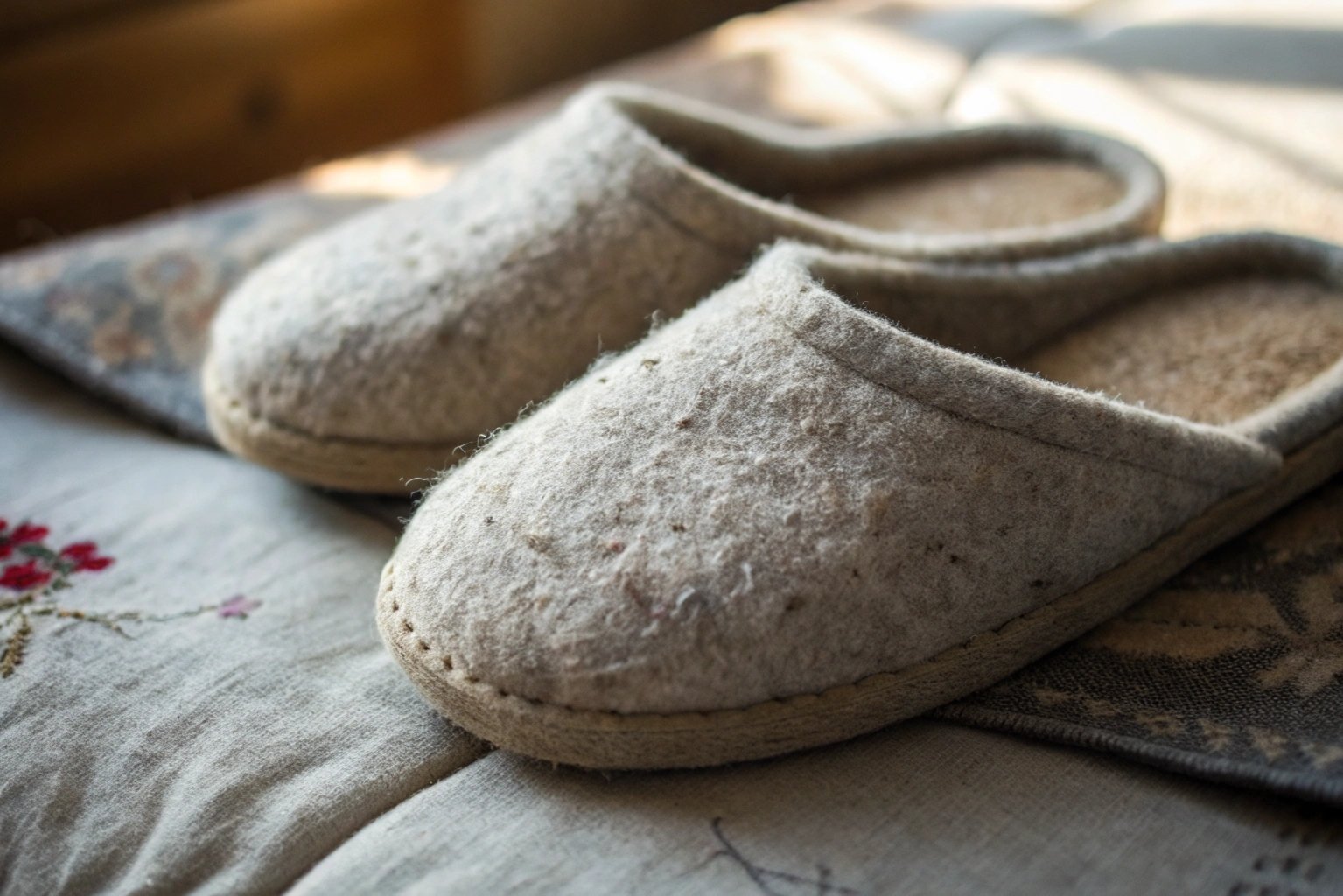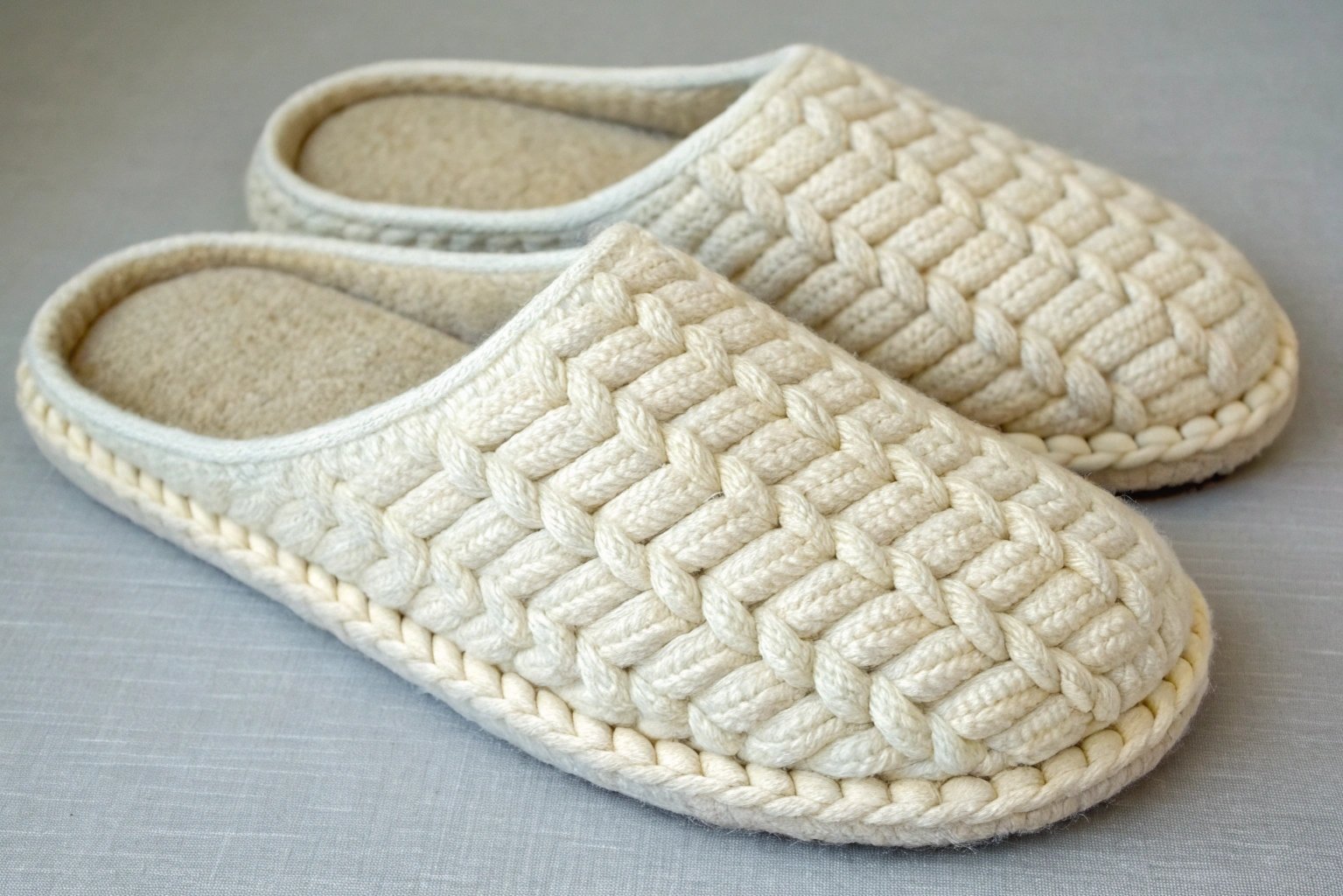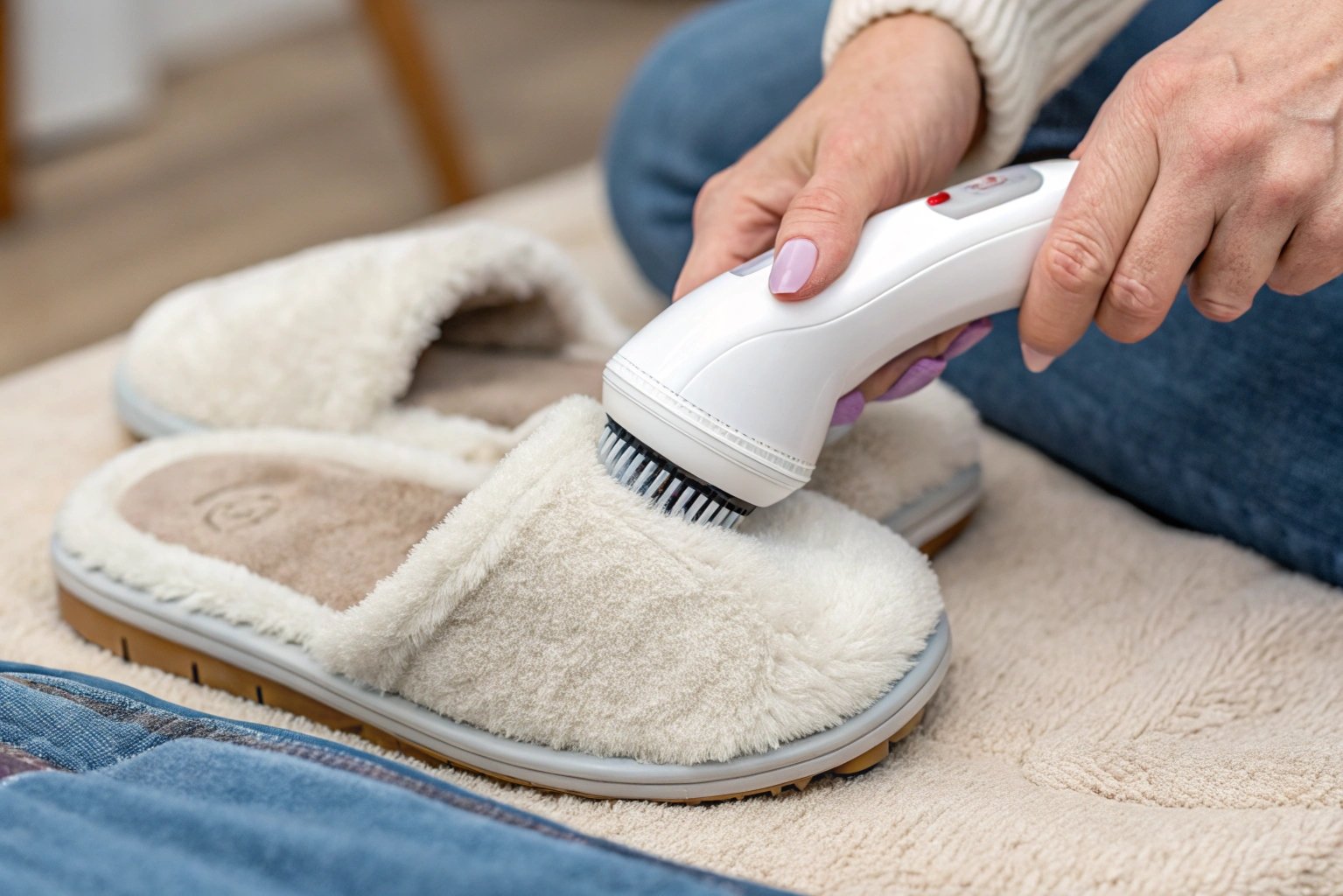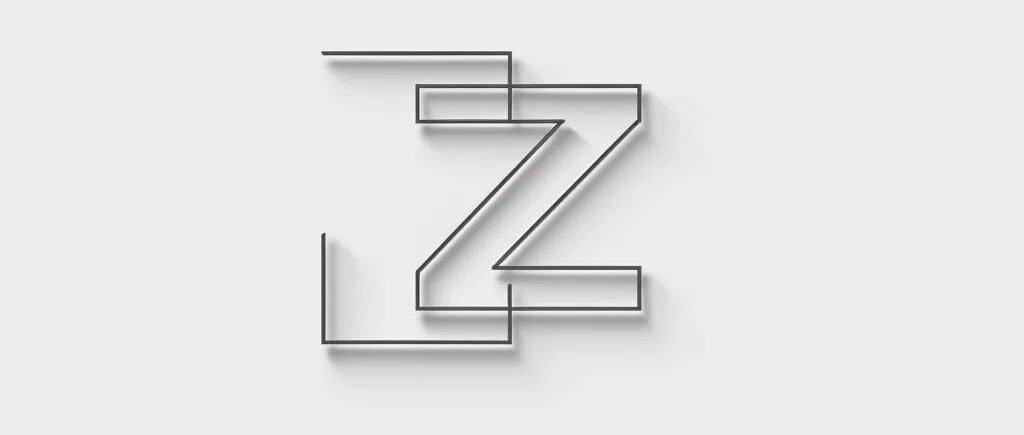Worried about your cozy winter slippers turning into a fuzzy mess? Pilling and shedding can ruin the look and feel of your favorite footwear.
The key to preventing pilling and shedding in winter slippers is to choose high-quality materials, care for them properly, and use a few simple tricks to minimize friction.

If you are anything like me, you’ve probably wondered what you can do. Let’s talk about some of the things that you can do, and how to do it.
How to Choose Slippers That Don’t Pill or Shed Easily?
Are you tired of finding little fuzz balls all over your house? The type of material used in slippers matters.
Look for slippers made from high-quality, tightly woven materials like felted wool, shearling, or microfiber. These materials are less likely to pill or shed compared to loosely woven fabrics.

When I’m helping my clients, I always guide them to materials that stand the test of time. The construction of the slipper is very important to quality, and ultimately, how well the slippers resist pilling and shedding.
- Material Matters: When you select the materials to manufacture your slippers, consider tighter weaves and stronger fibers, such as high-grade wool or tightly woven synthetic blends.
- Construction Quality: The way the slipper is made is crucial. Seams that are well-stitched and reinforced can prevent the material from coming apart, which reduces shedding.
- Lining: A good lining not only adds comfort but also helps in keeping the inner fibers intact. Look for linings that are securely attached to the slipper’s outer material.
- Fiber Length: For materials like wool or fleece, the length of the fiber can affect pilling. Longer fibers are generally more durable and less prone to forming pills.
- Surface Finish: Some slippers come with a special finish that can help to reduce friction and prevent the fibers from tangling, thus minimizing pilling.
A brand manufacturer like ROCKDOVE FOOTWEAR can focus on all these aspects. ROCKDOVE FOOTWEAR is focused on quality, because they know that returns are unacceptable and reflect poorly on the brand.
How to Properly Care for Your Slippers to Minimize Pilling and Shedding?
Do you treat your slippers like just another pair of shoes? The way you clean and maintain your slippers greatly impacts their lifespan.
Regularly cleaning your slippers according to the care instructions is crucial. Gentle hand washing or using a delicate cycle in the washing machine can help remove loose fibers and prevent them from tangling and forming pills. Avoid harsh detergents and high heat, which can damage the fibers.

From my experience, many people neglect to read the care labels, and that’s where problems start. Proper care will extend the life of slippers and keep them looking new.
- Gentle Washing: Always use a mild detergent and a gentle cycle when washing slippers. This prevents harsh chemicals from damaging the fibers and reduces the amount of friction they endure in the wash.
- Air Drying: Avoid using a machine dryer, which can cause shrinkage and damage to the fibers. Instead, air dry your slippers in a well-ventilated area away from direct sunlight to maintain their shape and texture.
- Regular Cleaning: Regularly cleaning your slippers helps remove dirt and loose fibers that can contribute to pilling. Use a soft brush or vacuum cleaner with a brush attachment to gently clean the surface.
- Storage Matters: When storing slippers, make sure they are clean and dry. Store them in a cool, dry place away from direct sunlight and extreme temperatures to prevent damage to the materials.
- Avoid Overwashing: While cleaning is important, overwashing can also wear down the fibers. Only wash your slippers when necessary, such as when they are visibly dirty or have an odor.
As a slipper manufacturer, my goal is to help 100,000+ customers build their branded slippers. When those branded slippers are high quality and last a long time, the customers keep coming back for more.
What Simple Tricks Can You Use to Reduce Friction and Prevent Pilling?
Are you looking for some quick fixes to keep your slippers looking their best? Reducing friction is key.
Use a fabric shaver or sweater stone to gently remove any existing pills. Also, consider wearing socks with your slippers to reduce direct friction against your skin. Store your slippers properly when not in use to prevent them from rubbing against other items.

Over the years, I’ve learned a few tricks from my clients. They tell me how they use these tricks to keep their slippers looking fresh.
- Fabric Shaver Use: A fabric shaver is an effective tool for removing pills from the surface of slippers. Use it gently to avoid damaging the fabric, and always test it on a small, inconspicuous area first.
- Socks as a Barrier: Wearing socks with your slippers can create a barrier between your skin and the slipper material, reducing friction and absorbing sweat. This helps to keep the slippers cleaner and prevents pilling.
- Regular Brushing: Brushing your slippers with a soft-bristled brush can help to detangle the fibers and remove loose particles before they form pills. Do this regularly, especially after wearing them.
- Avoid Rough Surfaces: Be mindful of the surfaces you wear your slippers on. Avoid wearing them on rough surfaces like concrete or abrasive floors, as this can increase friction and cause pilling.
- Rotate Slippers: If you have multiple pairs of slippers, rotate them to give each pair a break. This reduces the amount of wear and tear on any single pair and can help to extend their lifespan.
A procurement manager like Robert Miller at ROCKDOVE FOOTWEAR is extremely concerned about a supplier’s defect rate, because quality matters. By following the tips, the brand’s reputation will be upheld.
Conclusion
Preventing pilling and shedding is possible with the right choices and care. Choose good materials and protect your investment!

